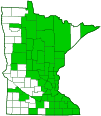midland clubtail
(Gomphurus fraternus)
Conservation • Description • Habitat • Ecology • Distribution • Taxonomy
Conservation Status |
|
|||||||
| IUCN Red List | not listed |
|||||||
| NatureServe | N5 - Secure SNR - Unranked |
|||||||
| Minnesota | not listed |
|||||||
Description |
||
Midland clubtail is an early season, medium-sized clubtail. The thorax is large and yellow with black markings including two lateral thoracic stripes. The first (anterior) stripe is incomplete or interrupted. The second (posterior) is variable or absent. The abdomen is slender and black with yellow markings. The upper (dorsal) surface or abdominal segments 1 through 7 have narrow, elongated, lance-shaped spots. Segment 8 has a small yellow triangle. Segments 7, 8, and 9 are expanded into a “club” that is only slightly narrower than the thorax. They have no dorsal markings but have large yellow spots on the sides. The color of this dragonfly varies with the temperature. In warm temperatures the light areas on the thorax and abdomen are yellow. In cool temperatures these areas are grayish-green. The markings on the side of expanded abdominal segments 8 and 9 are always yellow. The head is small. The face lacks the black horizontal stripe found on many other species of dragonflies. The large compound eyes do not meet at the top of the head. They are gray in warm temperatures, aqua blue in cool temperatures. The legs are black. The fourth segment of the hind leg of the female often has a pale lateral stripe. The wings are clear except for dark stigmas. The wing triangle, a section of intersecting veins about 20% of the way from the base to the wingtip, is about the same size in the forewing and the hindwing. |
||
Size |
||
2″ to 2⅜″ |
||
Similar Species |
||
Plains clubtail (Gomphurus externus) has a large yellow dorsal spot on abdominal segment 9. Splendid clubtail (Gomphus lineatifrons) is larger. It has a black horizontal face stripe and usually no dorsal spot on abdominal segment 8. |
||
Habitat |
||
Moderately to fast flowing rivers and large streams, large lakes with emergent vegetation. |
||
Ecology |
||
Season |
||
Early June to late July |
||
Behavior |
||
The adult perches on the ground or a rock on a bank or shoreline. It is a very strong flier and often patrols open water far from land. |
||
Life Cycle |
||
The female does not have an ovipositor. She lays eggs by washing them off in fast-flowing water in streams or rivers, or in waves on lakes. |
||
Naiad Food |
||
|
||
Adult Food |
||
Flying insects, including other dragonflies. |
||
Distribution |
||||
|
Sources Haarstad, J. 1997. The dragonflies of selected eastern Minnesota rivers. Report submitted to the Minnesota Department of Natural Resources. Unpaged. |
|||
| 6/17/2022 | ||||
Occurrence |
||||
Uncommon |
||||
Taxonomy |
|||
Order |
Odonata (dragonflies and damselflies) | ||
| Suborder | Anisoptera (dragonflies) | ||
Superfamily |
Gomphoidea | ||
Family |
Gomphidae (clubtails) | ||
Genus |
Gomphurus | ||
Superfamily Genus |
|||
Subordinate Taxa |
|||
midland clubtail (Gomphurus fraternus fraternus) midland clubtail (Gomphurus fraternus manitobanus) |
|||
Synonyms |
|||
Gomphus fraternus |
|||
Common Names |
|||
midland clubtail |
|||
Glossary
Stigma
In plants, the portion of the female part of the flower that is receptive to pollen. In Lepidoptera, an area of specialized scent scales on the forewing of some skippers, hairstreaks, and moths. In other insects, a thickened, dark, or opaque cell on the leading edge of the wing.
Tibia
The fourth segment of an insect leg, after the femur and before the tarsus (foot). The fifth segment of a spider leg or palp. Plural: tibiae.
Visitor Photos |
|||||
Share your photo of this insect. |
|||||
| This button not working for you? Simply email us at info@MinnesotaSeasons.com. Attach one or more photos and, if you like, a caption. |
|||||
Luciearl |
|||||
So many dragonflies this week! |
|||||
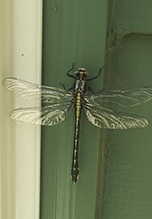 |
|||||
Krisha Saxon |
|||||
| I Came Upon thousands of clubtails emerging there nymph exoskeletons as dragonflies and drying their wings. By afternoon all of the dragonflies were gone. | 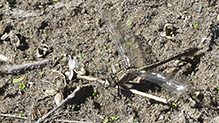 |
||||
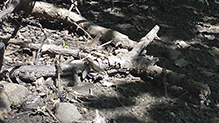 |
|||||
MinnesotaSeasons.com Photos |
|||||
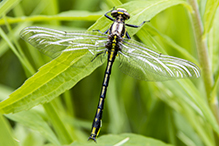 |
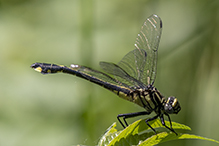 |
||||
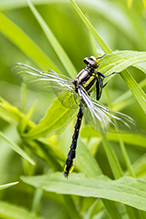 |
|||||

Slideshows |
||

Visitor Videos |
|||
Share your video of this insect. |
|||
| This button not working for you? Simply email us at info@MinnesotaSeasons.com. Attach a video, a YouTube link, or a cloud storage link. |
|||
Other Videos |
|||
| Gomphurus fraternus 15-06-2014 Caroline Piché |
|||
About
Published on Jun 16, 2014 |
|||
| Dragonfly Safari 4. The Cannibal Clubtails! MrOtterdude |
|||
About
Uploaded on Jun 19, 2011 In Dragonfly Safari 4, we take a first look at the Midland Clubtail. Strong fliers, they can take down large bugs, including each other! You will witness an act of cannibalism as a Midland Clubtail ambushes another in the grass. |
|||


Last Updated:
